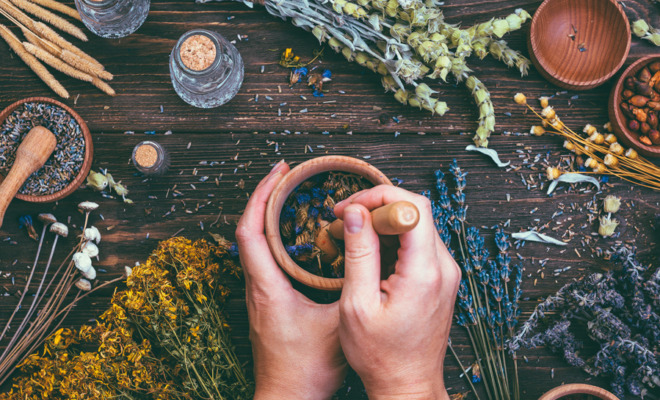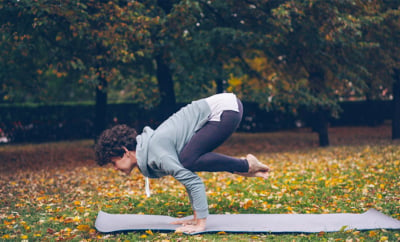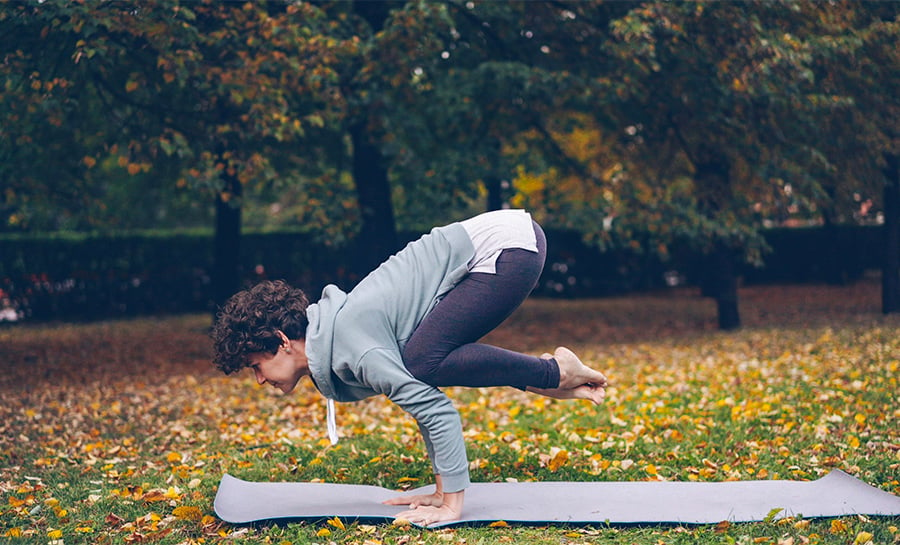Ayurveda and Sex: How They Relate and Complement Each Other

aurveda and sex
Sex. The word alone has the power to ignite those familiar feel-good tingles and, at the same time, send shivers of shame down many spines.
Though a not-so taboo subject anymore, the questions and lack of communication that surrounds what a healthy sex life looks like still remains bewildering.
Our sexuality is one of our deepest, primal needs. It is our creative life force in action, our birth right, our sacred expression, and our most valuable physiological asset. To healthily manage sexual energy is a vital piece of our existence. So vital, in fact, that the ancient sages of India believed it to be one of the three pillars of life.
Learn about the practice of the ancient Indian sages: What Is Ayurveda? Here’s a Crash Course in Everything You Need to Know
These Are Ayurveda’s 3 Pillars of Life:
Ayurveda, Indian traditional medicine, the “sister science” of yoga, and one of the world’s oldest health care systems, identifies three primary pillars of life:
- Food: Management of digestion
- Sleep: Management of sleep
- Brahmacharya: Management of sexual energy
Ayurveda and sex are actually a tighter-knit couple than you probably think. Ayurveda offers many suggestions about the proper role of sex in our lives and how to have a healthy sex life. This wisdom helps us align our sexuality with the ebb and flow of time, our ever-changing environment, and our individual desires.
Ayurveda and Sex: The Doshas
Ayurveda views the world as made up of five great elements:
- Earth
- Water
- Fire
- Air
- Space
These elements are quantified within the human physiology and psychology through the three doshas:
- Kapha: Earth + Water
- Pitta: Fire + a little Water
- Vata: Air + Space
The recommended frequency for sexual activity is quite different for each dosha. These recommendations are mere guidelines. You should always prioritize unique individual needs.
Dominant Kapha types naturally have more energy and can have more frequent sex. Two to three times per week is normal.
The recommended frequency for sexual activity is quite different for each dosha.
Pitta individuals may have a strong desire for sex, but can energetically burn out quickly – if they’re not mindful. Once a week, is recommended for Pittas – especially when overactive.
Those governed by the qualities of Vata dosha may also express free-loving desires for regular intimacy, which should not be suppressed. Though, due to this constitution’s variable and easily depleted energy levels, every other week is recommended to maintain proper balance for Vatas.
What Is Your Dosha? Here’s Everything You Need to Know About These Ayurvedic Mind-Body Types
Ayurveda and Sex: “Sexual Nutrition”
In Katie Silcox’s book, Happy, Healthy, Sexy, she describes something called “sexual nutrition.” It is a perspective that proposes we think about our sexual desires and expression just as we would think about food.
While eating a slice of cake every night sounds delightful it is – well – indulgent. And just to clarify – indulgence (or an inadequacy) isn’t “bad,” but it is not sustainable long term.
To healthily manage sexual energy is a vital piece of our existence. So vital, in fact, that the ancient sages of India believed it to be one of the three pillars of life.
When we connect in sex, we also unite energetically. It’s like a light socket – sex plugs you in to another person’s energy.
I believe this is why a lot of wisdom traditions, including Ayurveda, suggest reserving sexual connection for partners who are healthy and committed to you. If we begin to perceive our sexuality as being a form of emotional and energetic nutrition, we harness the innate power of its fundamental force and feed our experience in a whole new way.
You are a valuable, divine being; be wise about who you attach yourself to.
Ayurvedic and Sex: Guidelines for a Healthy Sex Life
- Approach sex as a form of nourishment and opportunity for a deep connection with your partner
- The body is at its prime during winter, so you can indulge in pleasurable acts every day
- In spring and fall, stamina is moderate, so sexual frequency should be every few days
- In summer, our strength is at its lowest, so sexual frequency can be reduced to every other week when necessary
- The best time to make love is between 10:00 and 11:00pm. This particular time-frame is governed by Pitta Dosha and when stamina and passion are at their peak
- Ayurveda believes that a lot of our vital energy, Ojas, is lost during orgasm. Keep foods and drinks in your pantry that rebuild Ojas, such as ghee, rice pudding, coconut water, bone broth, and milk (especially cow, but goat and almond are also good substitutes)
- Wait at least two hours after eating before you’re ready to roll
- Practice abhyanga (self-oil massage) in the morning before bathing
- Bathe with cool water after sex and dress in soft, clean clothes or pajamas
- Apana Vayu, one of the five “winds,” resides in the lower half of the body. It regulates the movement of the legs, elimination, menstruation, childbirth, and orgasm. The downward, outward movement of healthy apana also provides us with a sense of rootedness. Thus, sex (and masturbation) should be avoided during menstruation, as it opposes the downward energy of this natural cycle
The Takeaway On Ayurveda and Sex
Your sexuality is potent medicine for humanity, and an important aspect of your relationships and routines that should be explored forever.
As Vasant Lad writes in Fundamental Principles of Ayurveda, “When two people truly love each other and, within that loving relationship, they make love with awareness, they can transform ojas (vital energy) into profound bliss.”
Ayurveda and sex have wisely gone together for ages. May this ancient wisdom be like a tool – always on hand – to enhance, heal, and transform your sexual experiences all while bringing your closer to yourself and the ones you love.


This Month's Letter
From the Editor
Monthly motivation and food for
thought from our founder.

























